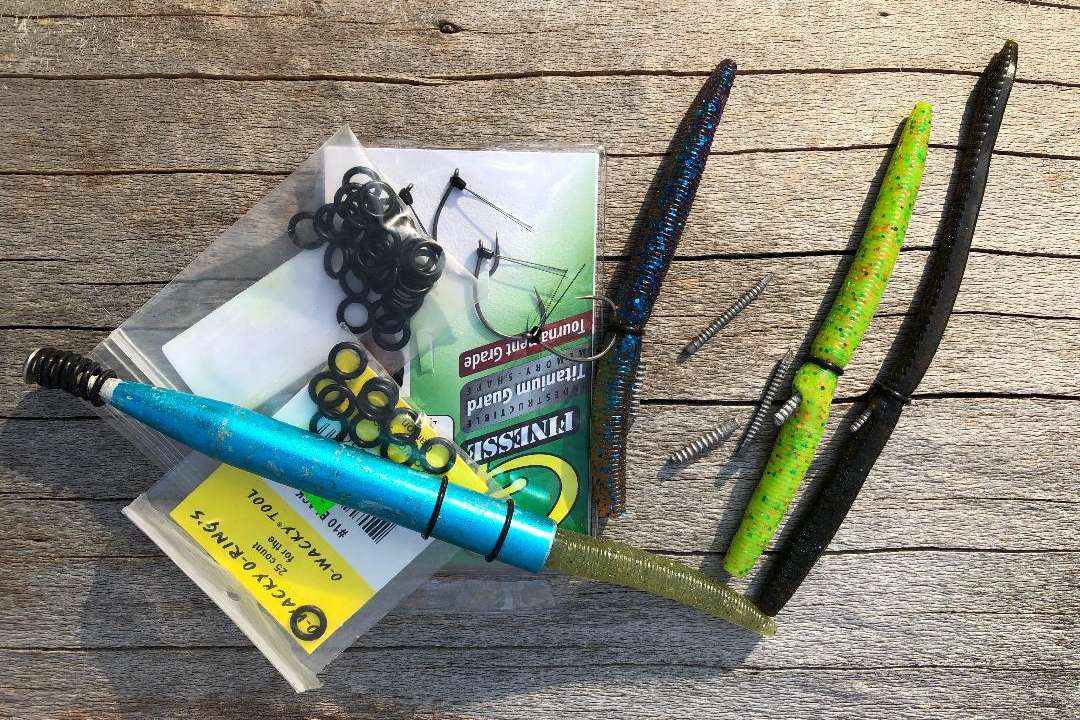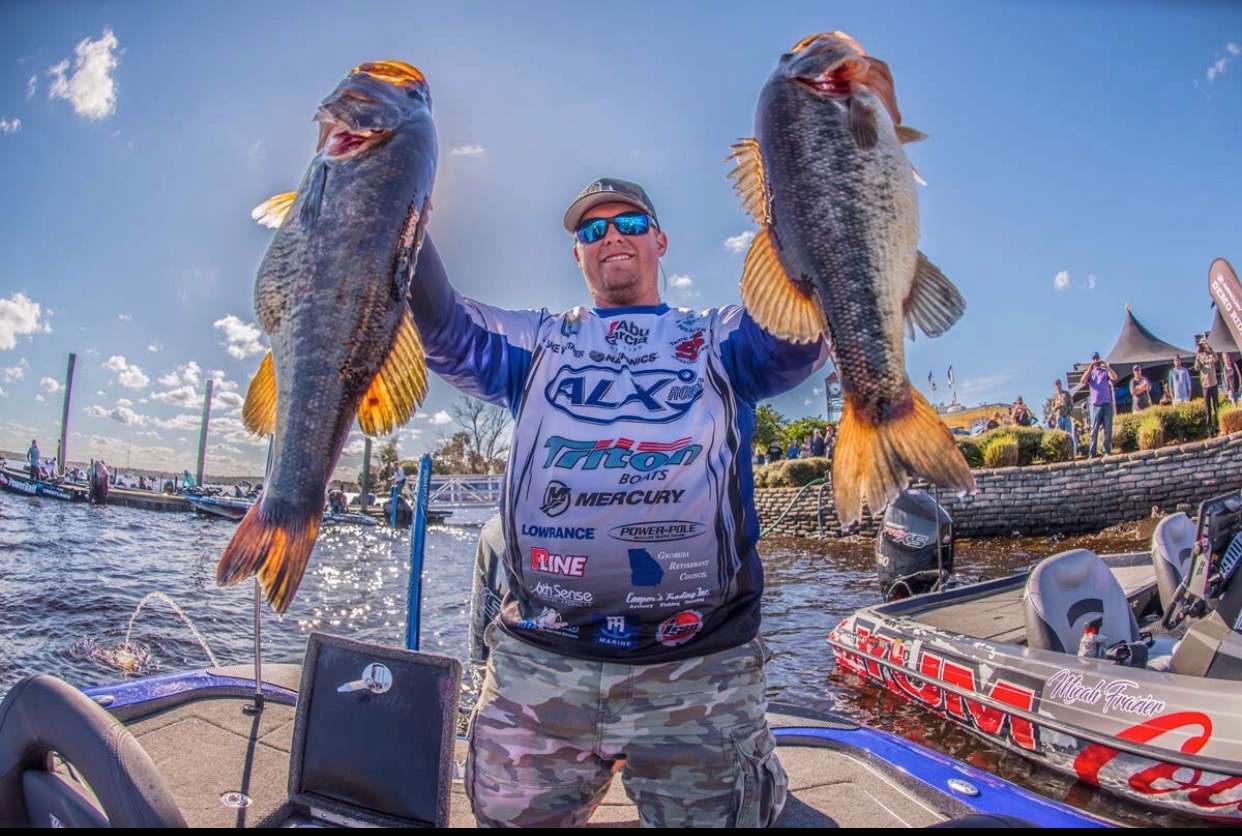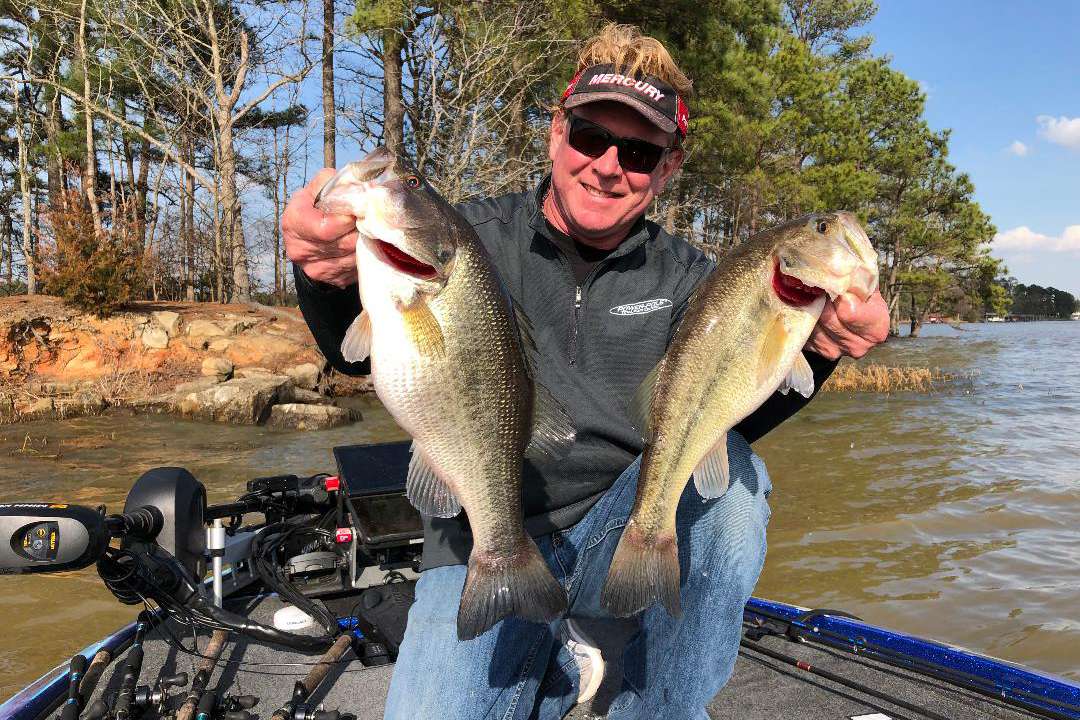
Like it or not, we are all a product of our upbringing. Ask third-year Elite angler Jake Whitaker how cutting his angling teeth on the clear, structure-laden waters of North and South Carolina lakes impacted his style, and he’ll tell you it make him wacky.
In the best sense of the word.

“You fish a ton of clean water, and you have a ton of boat docks, so the wacky rig gets you a lot of bites and a lot of big fish,” he said. “It’s a very natural bait, it’s not a loud, noisy bait. When you’re fishing pressured fish, you’re not throwing a big, heavy bait that falls fast.
“I don’t know what it’s representing that they want to eat; I just think it’s something that that falls slowly in front of their face. They think it’s an easy meal, and they go for it.”
Why it works
Having ridden his wacky rig skipping and pitching proficiency to a fifth-place finish at the 2020 Elite opener on the St. Johns River, Whitaker says he favors the prespawn/postspawn period. Fish staging on the spawn’s front or back side are prime targets, but he’ll also pester bedding fish with his center-hooked worm.
“You can catch a ton of bedding fish,” Whitaker said. “You may not know that they’re there when you throw the (wacky rig) way up ahead of you, but this is a deadly bait during the spawn.
Whitaker’s fellow Elite Rick Morris finds a wacky rig irresistible to fry guarders, especially when the protective males tuck the babies next to deeper dock pilings. Usually watching from the shadows, a protective parent won’t appreciate a big, wiggly stick worm threatening the youngins.
“Green pumpkin is a go-to color, but sometimes brighter colors like chartreuse laminate or white/green laminate work better,” Morris said.
Whitaker adds this: “Another time this bait works is during the shad spawn and blueback herring spawn in the Carolinas where the (baitfish) spawn a lot on points. We’ll take a wacky-rigged green pumpkin or shad colored Senko and throw it in 5 feet of water. You’d be surprised how many fish you’ll catch in less than 5 feet of water.
“That’s an effective bait for fish that have already seen the spinnerbaits, topwaters, swimbaits and flukes. Those fish that are a little bit smarter tend to fall for the wacky rig in that scenario. A lot of guys picture that time of the year as power fishing and, yes, it is. But after you’ve been through the area with those baits, catching a few more fish on a wacky rig is a great option.”
Rigging
Starting with a 5 1/2-inch Bizz Baits Sassy Stick, Whitaker uses a 2/0 Hayabusa Weedless Spin Muscle Wacky Hook. Going Neko, with a nail weight remains a tactical option, but Whitaker says his game is based on maximum presentations with a yes-or-no proposition.
“Normally, I throw a weightless wacky rig at the target and let it sink 5 to 8 seconds,” he said. “If I don’t get a bite on that initial fall, I’ll hop it once or twice, then I’ll reel it in and throw it somewhere else. I don’t spend a minute on a cast. It’s almost like a power fishing finesse technique.”
Recognizing the occasional need to reach deeper faster, Morris often nail weights his rig, but if you’re thinking “Neko rig,” think again. Nothing wrong with sticking a weight in the worm’s head, but he’s keen on showing the fish a little something different.
“Rate of fall makes a big difference,” Morris said. “Sometimes you skip it in there, and you’re going to get bit right away, especially if it’s the buck. If there’s a female around, letting the bait sink down a little farther and giving it a moment or two is better.
“Sometimes, I’ll put half a nail weight in the center right behind the hook and the O-ring, which seems to work better than the Neko rig on docks because of the way if shimmies and shakes as it falls. You want it to go straight down, instead of falling forward, like a Neko rig.”

Morris stresses that he’s a big believer in O-rings. Bait preservation is undeniable, as is better hook-up ratios, but he notes that an O-ring also helps hold the nail in place.
“Some people use a weighed hook, but if you do that, sometimes the wacky rig doesn’t skip as well,” Morris said.
Delivery system
Noting that his wacky tactics produce plenty of studs, including a 7-pounder at the 2020 Elite opener on the St. Johns River, Whitaker arms himself with an outfit capable of delivery and extraction. His choice: A 7-foot ALX Ikos Soul medium spinning rod with an Abu Garcia MGX 30 reel carrying 15-pound P-Line X braid and a 6-foot leader 8- to 12-pound P-Line Tactical fluorocarbon, depending on clarity.
“You want a rod with a good, soft tip with plenty of backbone, because you’ll wrangle with some big fish,” Whitaker said. “You don’t want a Snoopy pole.”
During his St. John’s performance, Whitaker demonstrated the Jedi-like precision needed for dock fishing consistency. It may seem daunting — the notion of sending a wiggling form into tight quarters, but Wacky-Wan-Kenobi breaks dispels the trepidation. (Don’t start calling him that, I just made it up.)
“Learning how to skip is huge, but that’s the beauty of a wacky rig — it’s probably the easiest bait to skip,” Whitaker said. “I tend to skip my wacky rig wherever I’m throwing it because you don’t get that loud splash and disturbance. A lot of times, the fish don’t even know it’s coming.
“I’m more of a sidearm skipper, rather than an underarm skipper, so I try to keep my rod tip about a foot from the water. You don’t have to swing really hard to get a bait to skip. It’s like skipping a rock across the water; it’s the same motion. Don’t make it harder than it is. Just make a smooth motion with your arm and wrist and let the rod do the rest of the work.”





